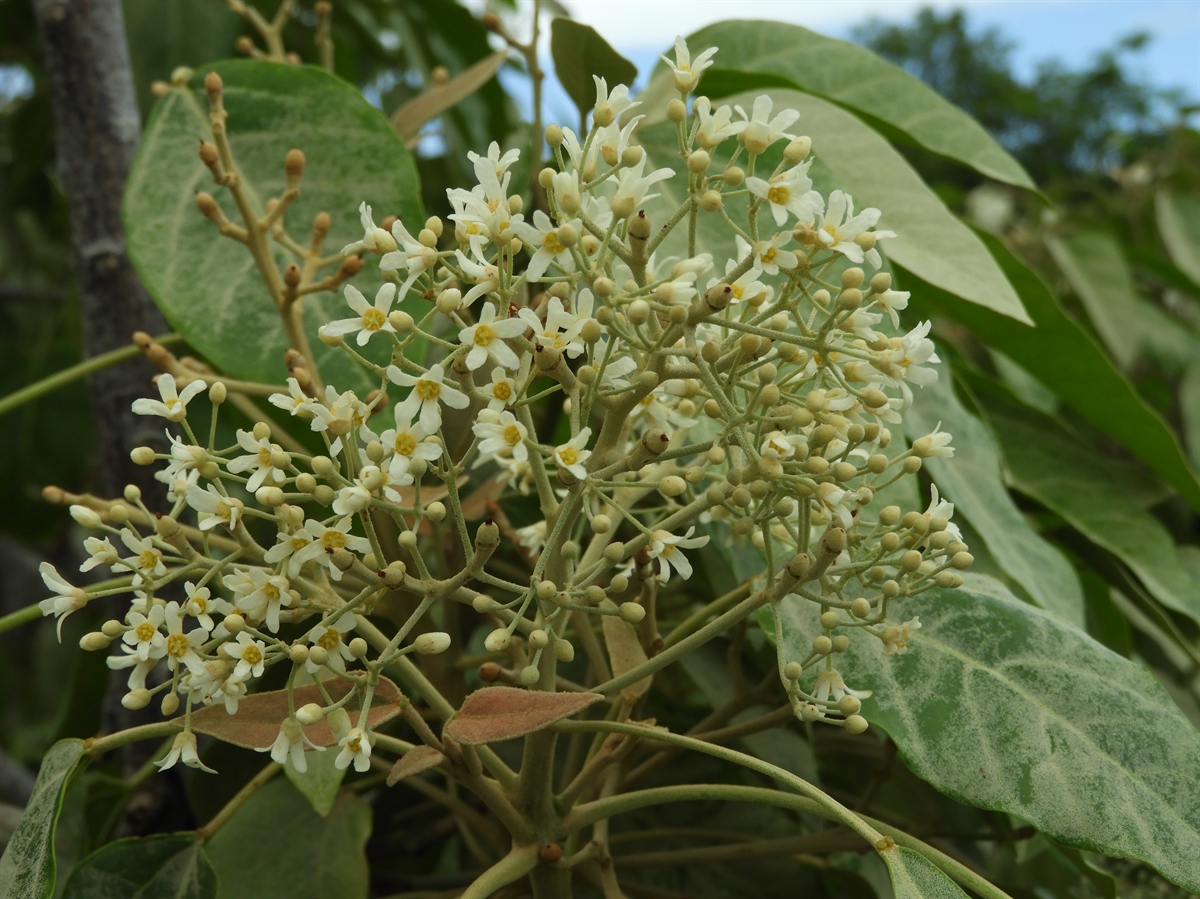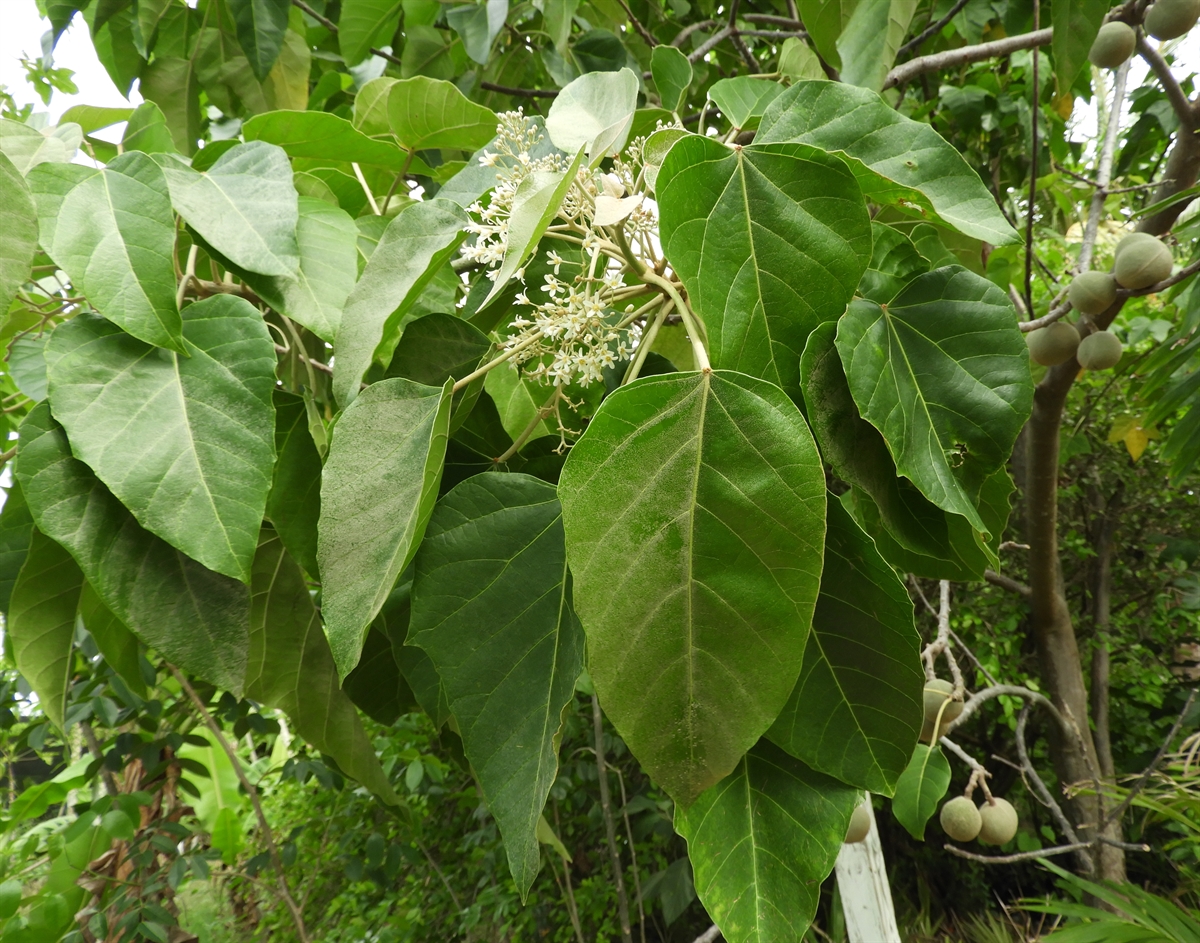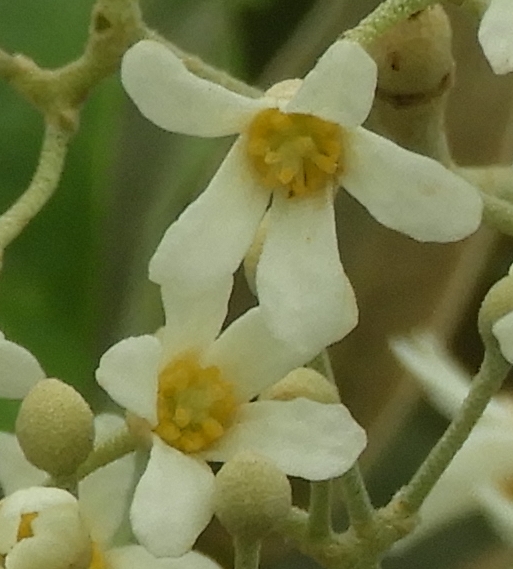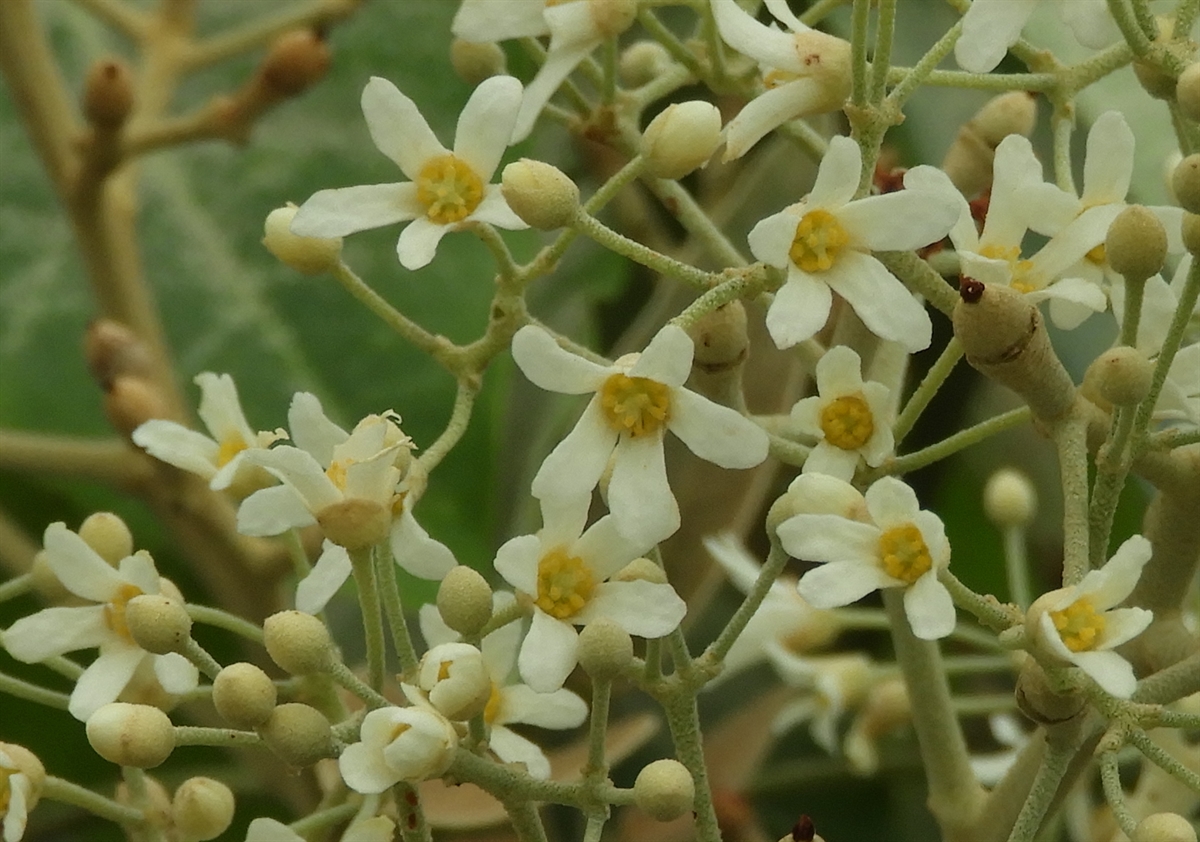Habit: Aleurites moluccanus grows as a tree up to 20 m in height. Stems and branches with dense pubescence. The petiole with 2 glands at the lamina base. The leaves are arranged alternately, ovate to suborbicular, to 30 cm long. The leaves have an acuminate leaf apex and an entire or lobed margin. The abaxial leaf surface has stellate pubescence.
Aleurites moluccanus is monoecious. The incomplete, imperfect, actinomorphic flowers are arranged in panicles. In both flowers the calyx has 5, fused at the base, sepals and the corolla has 5 white unfused petals. Staminate flowers have numerous stamens and no carpel. In carpellate flowers the ovary is superior and has 2-5 locules each with a single ovule and no stamens. The fruit is a brown “berry”.
Habitat: Aleurites moluccanus grows in Human Altered environments (yards, gardens, farms).
Distribution: Aleurites moluccanus is NOT native to the Lucayan Archipelago but is grown on various islands. It is native to Australia, Asia and the Indian subcontinent. It has spread around the world as a crop plant.
Medicinal/Cultural/Economic usage: Aleurites moluccanus is not known to be used medicinally in the Lucayan Archipelago.
The seeds are oil filled and can be used to derive oil for burning. The fruits can be cooked and eaten.




